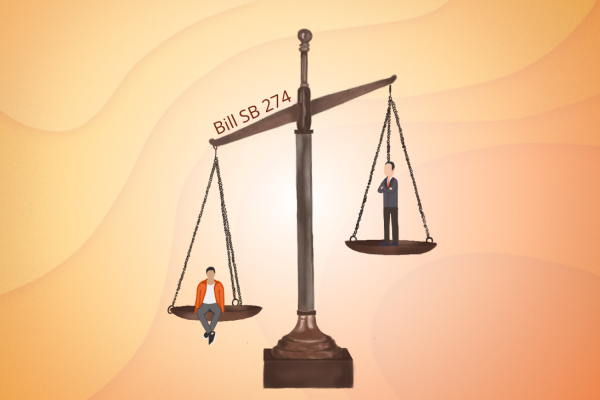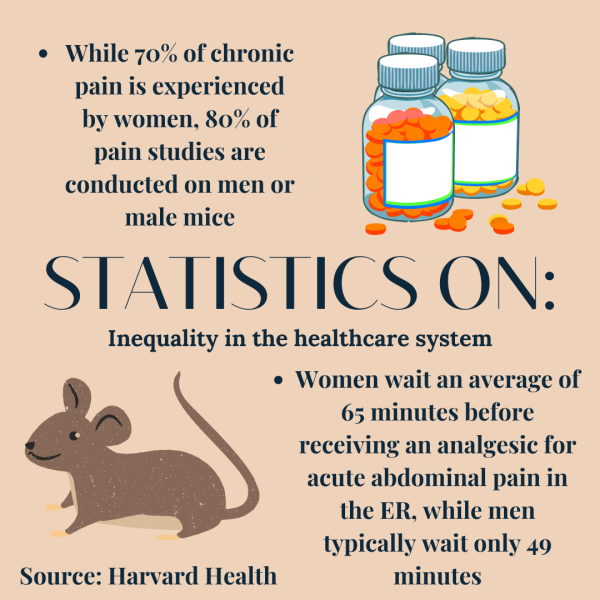How should we approach the Mahsa Amini protests? Certainly not with a Western lens
October 27, 2022
Politics should have no place in the racks of women’s clothing – but Jina “Mahsa” Amini’s death at the hands of the Iranian Morality Police has challenged the rights of women and bodily autonomy.
Amini’s cruel death, likely a murder, has brought global criticism to Iran’s religious societal norms – and rightfully so.
The 22-year-old Kurdish woman was arrested Sept. 13 for wearing the mandatory hijab “improperly.” She died in custody on Sept. 16. Iranian officials stated that the cause of death was a heart attack induced by pre-existing medical conditions, however a leaked CT scan reveals excessive damage to the brain caused by severe trauma to the skull.
Around the globe, critics are demanding accountability and posing tough questions: What constitutes wearing a hijab “improperly”? Why does Iran have a Morality Police? And why do they have the authority to torture citizens?
As a result of the 1979 Islamic Revolution, Ruhollah Khomeini, Iran’s first Supreme Leader, declared all women must wear the veil after taking power. Articles 19 and 20 in the 1979 constitution enforced Islamic laws which required women to wear a hijab, or head covering, and the Morality Police, established in 2005, has contributed to the longstanding history of oppression against women in Iran
Decades after the Islamic Revolution, we are amidst another shift in society: a feminist revolution. Iranian women are removing, tearing, even burning their hijabs, which represents the brutality faced in tyranny; they are taking down the same symbol that they have worn every day for over 40 years.
Their bravery has gone viral on social media, with trending hashtags such as #MahsaAmini. Still, without understanding the long-standing history of oppression in Iran, many do not fully recognize their resilience and the life-threatening risks.
Over 230 Iranian protesters have been killed and 1,400 wounded by the Morality Police since the demonstrations began, according to Oslo-based organization Human Rights Iran. We are reminded of both the tenacity and vulnerability of Iranian women as they lead a femnist uprising as the whole world watches. Young women are demanding freedom from religious tyranny which has restricted their lives through the clothing they wear every day.
It’s crucial to understand the fight against the patriarchal regime is more than a fight over a piece of fabric–it is the fight for bodily autonomy. Their fight is not against the hijab itself, but rather a gender apartheid. This revolution extends beyond the borders of Iran. For example, in France, the senate has voted to ban girls under the age of 18 from wearing the hijab.
Growing up in a Middle Eastern and Muslim family, I’ve seen the attack on women’s bodies firsthand. It is sadly widely accepted in my culture to condemn young girls for their clothing and to push harmful standards in the name of “modesty.” Oftentimes, many stereotype women through orientalism, defined as the depiction of the Middle East by Westerners through a colonist mindset. However, the policing of women in Iran is not solely unique to cultures of the Middle East; it is a war on women that exists across the world.
As the world becomes aware of the atrocities of the Iranian regime, we must also acknowledge the hypocrisy of the West. Many use Amini’s death to criticize Islam and the hijab in particular, but this contradicts the fight of Iranian women; they are fighting against a patriarchal regime, fighting for their sovereignty.
We must not view the Iranian women’s movement using the default Western frame, and instead understand it from an intersectional perspective, analyzing it through identities including gender, race, faith, ethnicity, sexuality, ability, and class. This revolution cannot and should not be overshadowed by a neoliberal lens.
The existing power structures in Iran follow a complex history that should be understood outside of the orientalist or savior narratives and instead with genuine inquiry surrounding bodily autonomy and its dangerous impacts to Iranian women.
This story was originally published on The Forest Scout on October 21, 2022.





























![IN THE SPOTLIGHT: Junior Zalie Mann performs “I Love to Cry at Weddings,” an ensemble piece from the fall musical Sweet Charity, to prospective students during the Fine Arts Showcase on Wednesday, Nov. 8. The showcase is a compilation of performances and demonstrations from each fine arts strand offered at McCallum. This show is put on so that prospective students can see if they are interested in joining an academy or major.
Sweet Charity originally ran the weekends of Sept. 28 and Oct. 8, but made a comeback for the Fine Arts Showcase.
“[Being at the front in the spotlight] is my favorite part of the whole dance, so I was super happy to be on stage performing and smiling at the audience,” Mann said.
Mann performed in both the musical theatre performance and dance excerpt “Ethereal,” a contemporary piece choreographed by the new dance director Terrance Carson, in the showcase. With also being a dance ambassador, Mann got to talk about what MAC dance is, her experience and answer any questions the aspiring arts majors and their parents may have.
Caption by Maya Tackett.](https://bestofsno.com/wp-content/uploads/2024/02/53321803427_47cd17fe70_o-1-1200x800.jpg)
![SPREADING THE JOY: Sophomore Chim Becker poses with sophomores Cozbi Sims and Lou Davidson while manning a table at the Hispanic Heritage treat day during lunch of Sept 28. Becker is a part of the students of color alliance, who put together the activity to raise money for their club.
“It [the stand] was really fun because McCallum has a lot of latino kids,” Becker said. “And I think it was nice that I could share the stuff that I usually just have at home with people who have never tried it before.”
Becker recognizes the importance of celebrating Hispanic heritage at Mac.
“I think its important to celebrate,” Becker said. “Because our culture is awesome and super cool, and everybody should be able to learn about other cultures of the world.”
Caption by JoJo Barnard.](https://bestofsno.com/wp-content/uploads/2024/01/53221601352_4127a81c41_o-1200x675.jpg)














